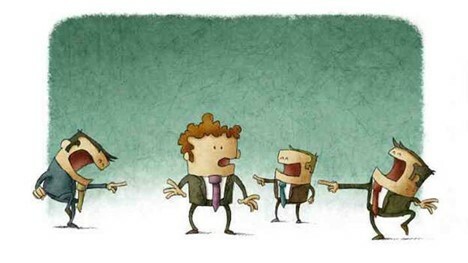The workplace bully is the topic of many conversations and we often wonder what type of person becomes the workplace bully. Most of us think that we could never be the workplace bully and we think that it is other people who are at risk. Many experts do in fact believe that there are certain personality types that develop into the workplace bully. This might be true in some cases. However, it is ultimately the organization that is to blame for creating the workplace bully and this means that anyone in the bully culture could become the next aggressor.
The organizational culture is the shared identity that is created at work. It is the beliefs, values, and characteristics unique to each workplace. The organizational culture dictates how people behave and what the expectations and standards are for workers. These can be both written and unwritten. But they are vital to every day functioning an organization. Workers and leaders follow the norms in the organizational culture even if they are not aware that they are doing it.
In a healthy workplace, the organizational culture is resilient, clearly identifying the expectations, holding workers accountable, and generally empowers workers. The healthy organizational culture manages conflict or problems as they arise and uses these as opportunities to strengthen their work environment. Accountability is upheld and workers share a collective identity.
The unhealthy work culture, on the other hand, is chaotic and toxic. They also have standards and expectations, but these are designed to increase the dysfunction. Unhealthy work environments devalue workers on a regular basis and the cultural norms are meant to hurt worker’s professional reputation rather than build it up. The unhealthy work culture uses conflict to inflict pain and pits workers against one another. This becomes the norm.
The unhealthy work environment does not adapt to change but rather makes every attempt to maintain the status quo despite its toxicity. The organization lacks leadership to uphold accountability and workers are used as weapons creating an environment that is essentially a cesspool. It is out of this cesspool that the workplace bully is born.
It is unreasonable to think that a worker can continue to be employed at agencies or organizations that are dysfunctional and not have them adapt to their surroundings. The worker that is repeatedly disempowered at work, eventually is unable to take any more and they hit rock bottom. When this happens, a worker starts the transformation process from a disempowered worker into the workplace bully. The up-and-coming bully begins to lash out their colleagues out of frustration and powerlessness. As they do this, they start to feel something and whatever it is they are feeling, they like it. They start to retake the power that the organization has taken from them by engaging in workplace bullying.
It is important to point out here that any one of us working in difficulty work environments have the potential to become the bully. Any one of us can become so disempowered at work that we start to attack our colleagues to regain some power. It is in fact empowering to be the workplace bullying.
The more bullying that occurs, the more power the bully has and the more they will bully to maintain their power. The more bullying, the more emboldened the bully becomes and the more at-risk the work environment is. The bad behavior increases, and they start pushing the limits to see what they can get away with. A culture of fear begins to develop in the organization and workers change their behavior to accommodate the bully. If the bully is not held accountable and there is inaction by leadership, the bullying behavior will be reinforced. Thus, the bully culture begins.
The response by co-workers is also key in the evolutionary process of the bully. If co-workers band together and show outrage about this behavior, it is likely that the bad behavior stops. Group norms can be influential in preventing the workplace bullying by clearly showing that it is unacceptable. However, they can also reinforce the behavior and the bullying if they do not speak up.
An increase in unprofessional behavior or bullying types of behaviors may throw co-workers off and they may not be sure how to respond. They may think it is funny or even participate some. Failure to draw a line in the sand for the worker encourages more bad behavior. Co-workers will eventually begin to treat the workers displaying bad behavior differently. Workers do not want to get in the way of a potential bully. As a result, they may start to let the worker do things that they did not before. Thus, the worker starts to get rewarded for their bad behavior. Finally, the worker is not the one being put down, but they are the one inflicting the harm. The unhealthy workplace is not able to stop bad behavior, or hold the person accountable. But rather, it allows the poor behavior to continue and increase in intensity. Thus, the workplace bully is born.
Although there may be some personality types that are more at-risk to becoming a bully, the reality is that we are all at-risk to become a bully given the right circumstances and the culture. Bullies are not born; they are made by organizational dysfunction.
It is essential that workplaces create a culture that fosters healthy relationships and set standards of behavior that work for the organization and not against it. Most importantly, workplace cultures must be resilient and hold all workers accountable. Investing in the resilient workplace empowers workers to be better professionals and prevents the workplace bully culture.

